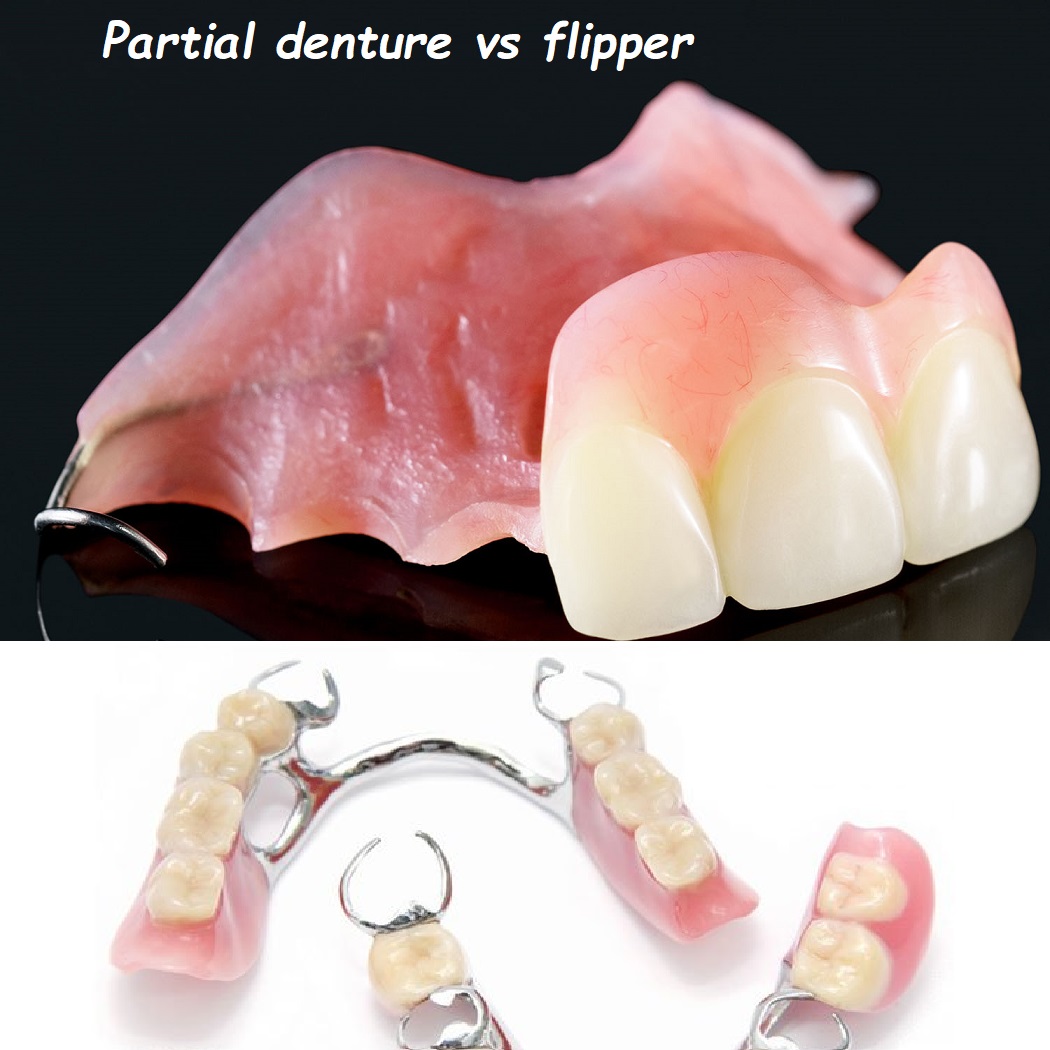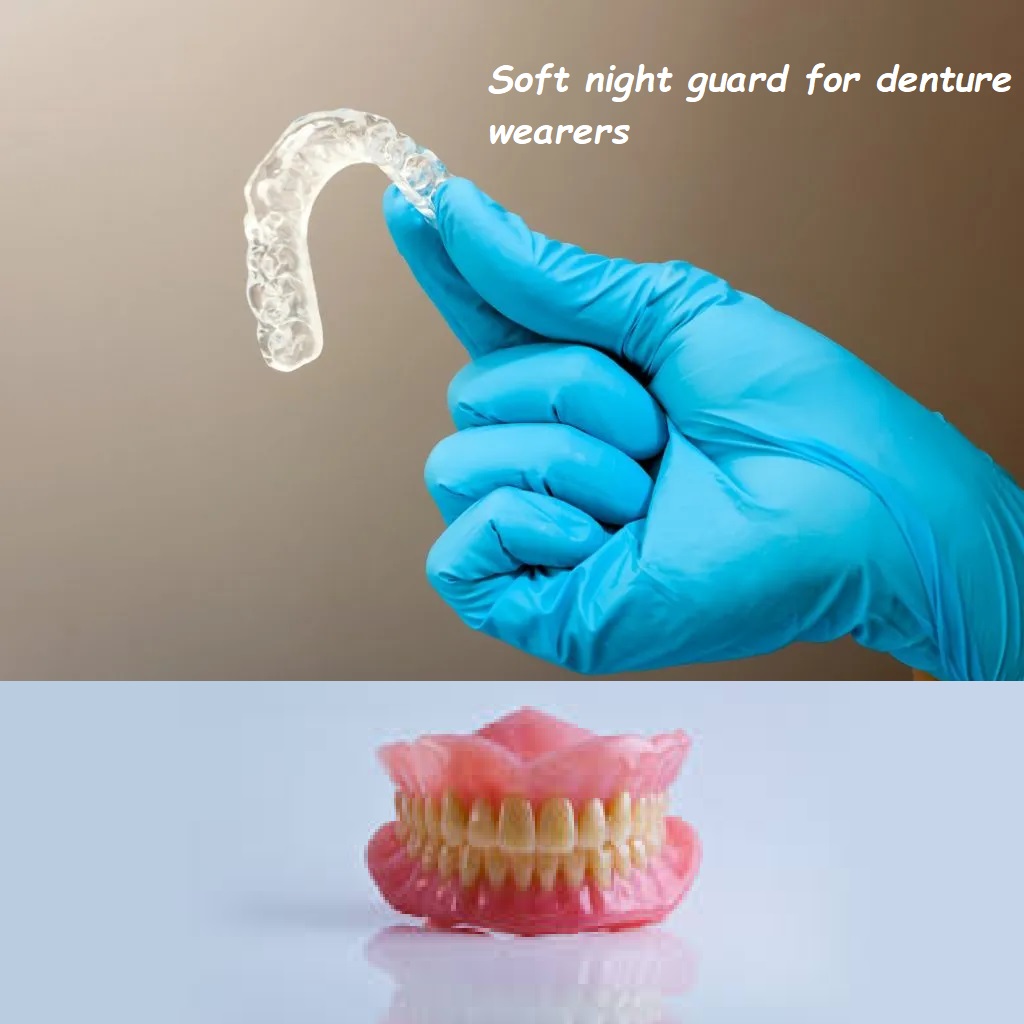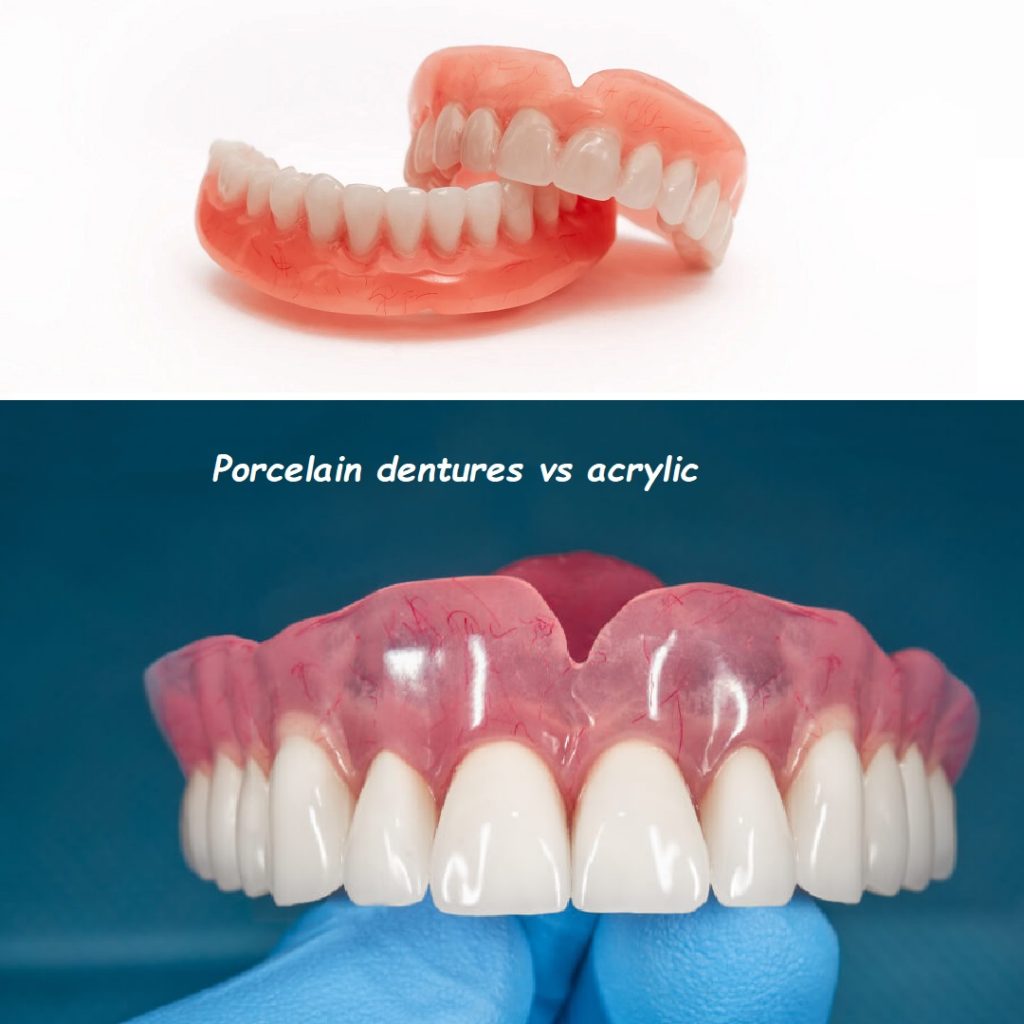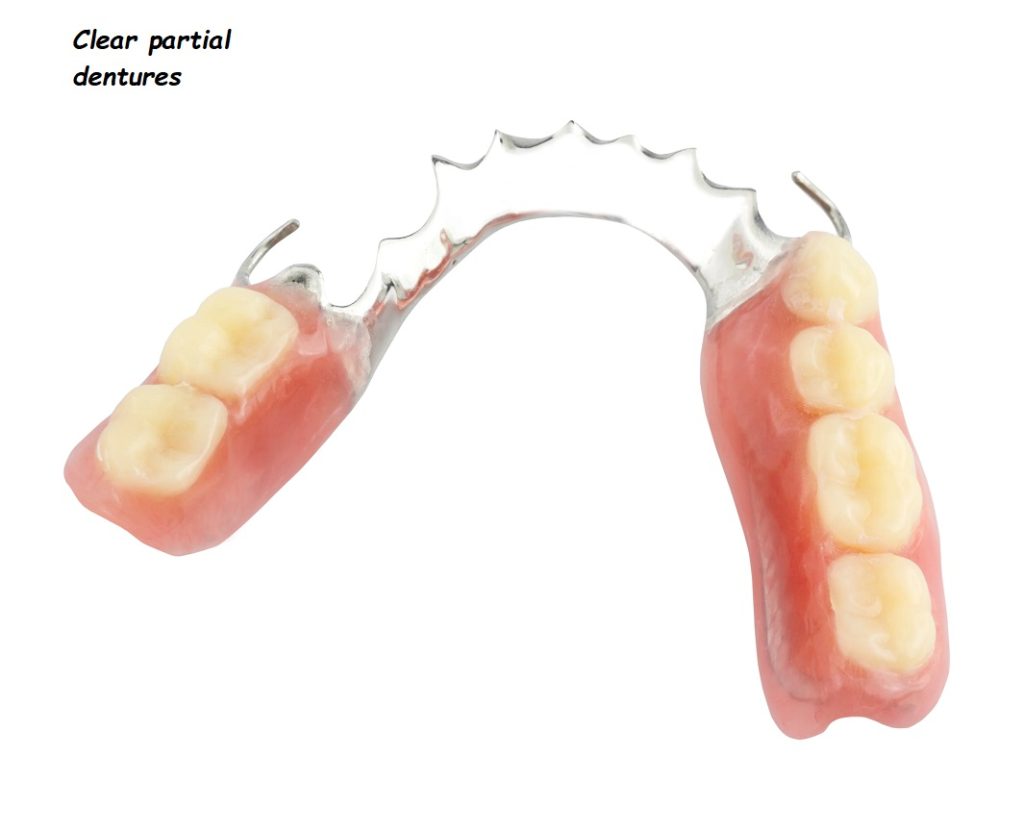Partial denture vs flipper

Partial Denture vs Flipper: Which Is the Right Choice for You?
When it comes to replacing missing teeth, you might find yourself choosing between two common options: a partial denture and a flipper. Both of these dental appliances serve the purpose of filling gaps left by missing teeth, but they come with their own sets of advantages, disadvantages, and specific uses.
In this comprehensive guide, we’ll dive deep into the differences between partial dentures and flippers, their respective benefits and drawbacks, and how to decide which option is best suited for your dental needs. By the end of this article, you’ll have a clear understanding of these two options and be better equipped to make an informed decision.
What Is a Partial Denture?
A partial denture is a removable dental appliance designed to replace one or more missing teeth in a single arch. It consists of artificial teeth attached to a metal or acrylic framework that fits snugly around your remaining natural teeth.
Key Features of Partial Dentures:
- Durability: Made with a metal or acrylic base, partial dentures are designed for long-term use and are built to last.
- Removable: Partial dentures can be easily removed for cleaning and maintenance.
- Custom Fit: They are custom-made to fit the unique contours of your mouth, ensuring a comfortable and secure fit.
- Natural Appearance: Partial dentures are designed to blend in with your natural teeth, providing a seamless look.
Types of Partial Dentures:
- Cast Metal Partial Dentures: These are the most common type of partial denture, consisting of a metal framework with acrylic teeth and gums. They offer excellent durability and a secure fit.
- Acrylic Partial Dentures: These dentures are made entirely of acrylic and are often used as a temporary solution. They are lighter and less expensive but may not be as durable as metal-based partials.
- Flexible Partial Dentures: Made from a flexible, thermoplastic material, these dentures are more comfortable and fit more naturally around your gums. They are an excellent option for those with sensitive gums or who struggle with the rigidity of traditional dentures.
What Is a Flipper?
A flipper, also known as a temporary or removable partial denture, is a dental appliance designed to replace one or more missing teeth, usually on a temporary basis. Flippers are typically used as a stopgap solution while waiting for a more permanent dental restoration, such as a dental implant or a fixed bridge.
Key Features of Flippers:
- Lightweight: Flippers are made from lightweight acrylic, making them easy to wear and handle.
- Removable: Like partial dentures, flippers can be easily removed for cleaning and maintenance.
- Cost-Effective: Flippers are generally less expensive than other tooth replacement options, making them a budget-friendly choice for temporary use.
- Quick Solution: Flippers can be made relatively quickly, providing a fast fix for missing teeth.
Uses of Flippers:
- Temporary Tooth Replacement: Flippers are often used as a temporary solution after a tooth extraction or while waiting for a more permanent dental appliance.
- Aesthetic Purposes: Flippers can help maintain your appearance and prevent embarrassment by filling in gaps left by missing teeth.
- Transitional Appliance: They can serve as a transition while your mouth heals or while you wait for the next stage of dental treatment.
Partial Denture vs Flipper: Key Differences
Now that we’ve defined what partial dentures and flippers are, let’s compare them directly. Understanding the key differences between these two options can help you choose the one that best suits your needs.
1. Purpose and Duration:
- Partial Denture: Partial dentures are typically designed for long-term use. They provide a durable and functional solution for missing teeth, often lasting several years with proper care.
- Flipper: Flippers are generally intended for short-term or temporary use. They are often used as a placeholder while waiting for a more permanent solution, such as a dental implant or fixed bridge.
2. Comfort and Fit:
- Partial Denture: Partial dentures are custom-made to fit securely around your remaining natural teeth, providing a stable and comfortable fit. They are generally more comfortable for long-term wear.
- Flipper: Flippers are also custom-made but may not provide the same level of comfort as partial dentures, especially for long-term use. They are lightweight and may feel less secure than partial dentures.
3. Durability:
- Partial Denture: Partial dentures are made from durable materials, such as metal and acrylic, designed to withstand the wear and tear of daily use over several years.
- Flipper: Flippers are made from lighter materials, typically acrylic, and are not as durable as partial dentures. They are prone to wear and damage over time, especially with extended use.
4. Aesthetics:
- Partial Denture: Partial dentures are designed to closely match the color and appearance of your natural teeth and gums, providing a seamless and natural-looking smile.
- Flipper: Flippers are also designed to blend in with your natural teeth, but because they are often used as a temporary solution, they may not achieve the same level of aesthetic quality as partial dentures.
5. Cost:
- Partial Denture: Partial dentures are generally more expensive than flippers due to the materials used and the customization required. However, they are a long-term investment.
- Flipper: Flippers are typically less expensive, making them an affordable option for temporary tooth replacement. However, they may need to be replaced or upgraded if used for an extended period.
Benefits of Partial Dentures
Let’s take a closer look at the specific benefits that partial dentures offer:
1. Long-Term Solution:
Partial dentures are designed to be a long-term solution for missing teeth. They are durable, reliable, and can last several years with proper care, making them a worthwhile investment.
2. Improved Functionality:
Partial dentures restore the natural function of your teeth, allowing you to eat, speak, and smile with confidence. They provide stability and support for your remaining teeth, preventing further dental issues.
3. Aesthetic Appeal:
Partial dentures are custom-made to match your natural teeth, providing a seamless and attractive smile. They can help restore your confidence and improve your overall appearance.
4. Prevents Tooth Shifting:
By filling in the gaps left by missing teeth, partial dentures prevent the surrounding teeth from shifting out of place. This helps maintain the alignment of your teeth and prevents future dental problems.
Benefits of Flippers
Now, let’s explore the benefits of flippers:
1. Quick and Affordable:
Flippers are a cost-effective and quick solution for temporary tooth replacement. They can be made relatively quickly, often within a few days, providing an immediate fix for missing teeth.
2. Lightweight and Easy to Use:
Flippers are lightweight and easy to handle, making them a comfortable option for temporary use. They can be easily removed for cleaning and maintenance.
3. Aesthetic Solution:
Flippers help maintain your appearance by filling in gaps left by missing teeth. They are designed to match your natural teeth, allowing you to smile confidently while waiting for a more permanent solution.
4. Versatility:
Flippers are versatile and can be used in various situations, such as after a tooth extraction or while waiting for dental implants or bridges. They provide a temporary solution that can be easily adjusted or replaced as needed.
How to Choose Between a Partial Denture and a Flipper
Choosing between a partial denture and a flipper depends on several factors, including your budget, the number of missing teeth, and your long-term dental goals. Here are some considerations to help guide your decision:
1. Consider the Duration of Use:
- If you need a long-term solution for missing teeth, a partial denture is likely the better choice. It offers durability, comfort, and functionality that can last for years.
- If you’re looking for a temporary solution while waiting for a more permanent option, a flipper may be the best choice. It’s quick, affordable, and provides an immediate fix for missing teeth.
2. Evaluate Your Budget:
- Partial dentures are generally more expensive than flippers due to their durability and the materials used. However, they are a long-term investment that provides lasting value.
- Flippers are more affordable upfront, making them a budget-friendly option for temporary use. Keep in mind, however, that they may need to be replaced or upgraded if used for an extended period.
3. Think About Comfort and Functionality:
- Partial dentures offer a secure and comfortable fit, making them a better option for long-term wear. They provide stability and support for your remaining teeth, improving your ability to eat and speak naturally.
- Flippers are lightweight and easy to use, but they may not provide the same level of comfort or stability as partial dentures, especially for long-term use.
4. Assess Your Aesthetic Needs:
- Partial dentures are designed to match your natural teeth closely, providing a seamless and attractive smile. They are a good choice if aesthetics are a top priority.
- Flippers also offer a natural appearance, but they may not achieve the same level of aesthetic quality as partial dentures, especially if used for an extended period.
Real-Life Experiences: Partial Denture vs Flipper
Sometimes, hearing about others’ experiences can help you relate better to the options available. Here are a couple of real-life scenarios where people had to choose between a partial denture and a flipper:
Scenario 1: Emily’s Temporary Solution
Emily had a tooth extraction and needed a quick solution to fill the gap while waiting for her dental implant. Her dentist recommended a flipper as a temporary fix. Emily appreciated the quick turnaround and the affordable cost of the flipper. It allowed her to maintain her appearance and eat comfortably while waiting for her implant.
Scenario 2: James’s Long-Term Investment
James had been missing several teeth for years and was looking for a durable, long-term solution. After consulting with his dentist, James decided that a partial denture was the best choice. Although it was more expensive than a flipper, the partial denture provided a secure and comfortable fit, restored his ability to chew effectively, and improved his smile’s appearance.
Common Questions About Partial Dentures and Flippers
1. How long does it take to get a partial denture or a flipper?
The process of getting a partial denture typically takes a few weeks, including consultations, impressions, and fittings. Flippers, on the other hand, can be made in a shorter time frame, often within a few days to a week.
2. Can I sleep with my partial denture or flipper in my mouth?
It’s generally recommended to remove both partial dentures and flippers while sleeping to give your gums a chance to rest and reduce the risk of irritation or infection.
3. How do I clean my partial denture or flipper?
Both partial dentures and flippers should be cleaned daily. Use a soft-bristle toothbrush and mild denture cleaner to remove food particles, plaque, and bacteria. Avoid using regular toothpaste, as it can be abrasive and damage the appliance.
4. How long do partial dentures and flippers last?
Partial dentures are designed for long-term use and can last several years with proper care. Flippers, being a temporary solution, may last a few months to a year, depending on how well they are maintained.
5. Can I eat normally with a partial denture or flipper?
Partial dentures are designed to restore your ability to eat normally, although you may need to avoid very hard or sticky foods. Flippers also allow you to eat, but they may not be as stable or durable as partial dentures, so softer foods are recommended.
The Future of Dental Appliances: Innovations in Partial Dentures and Flippers
As dental technology continues to advance, new innovations are making partial dentures and flippers more comfortable, durable, and aesthetically pleasing. Here’s what the future holds:
1. Advanced Materials: The development of new materials is leading to partial dentures and flippers that are more durable, lightweight, and natural-looking. These materials are designed to better mimic the appearance and function of natural teeth.
2. 3D Printing: 3D printing technology is revolutionizing the way dentures and flippers are made, offering faster production times and more precise fits. This can lead to more comfortable and effective dental appliances.
3. Digital Impressions: Digital technology is becoming more common in dentistry, providing more accurate impressions and a better overall fit for partial dentures and flippers. This reduces the need for adjustments and improves patient satisfaction.
4. Flexible Dentures: Flexible dentures, made from thermoplastic materials, are becoming more popular due to their comfort and natural fit. These dentures are particularly beneficial for patients with sensitive gums or those who struggle with the rigidity of traditional dentures.
Conclusion: Making the Right Choice for Your Smile
Choosing between a partial denture and a flipper is an important decision that can impact your oral health, comfort, and confidence. By understanding the differences between these two options, you can make an informed choice that aligns with your needs and goals.
Your Next Steps:
If you’re still unsure which option is best for you, consider scheduling a consultation with your dentist. They can provide personalized advice based on your specific situation, helping you make the best decision for your smile.
Got More Questions? Let’s Talk!
If you have more questions about partial dentures, flippers, or any other dental appliance, don’t hesitate to reach out. We’re here to help you every step of the way on your journey to a healthier, more beautiful smile!









